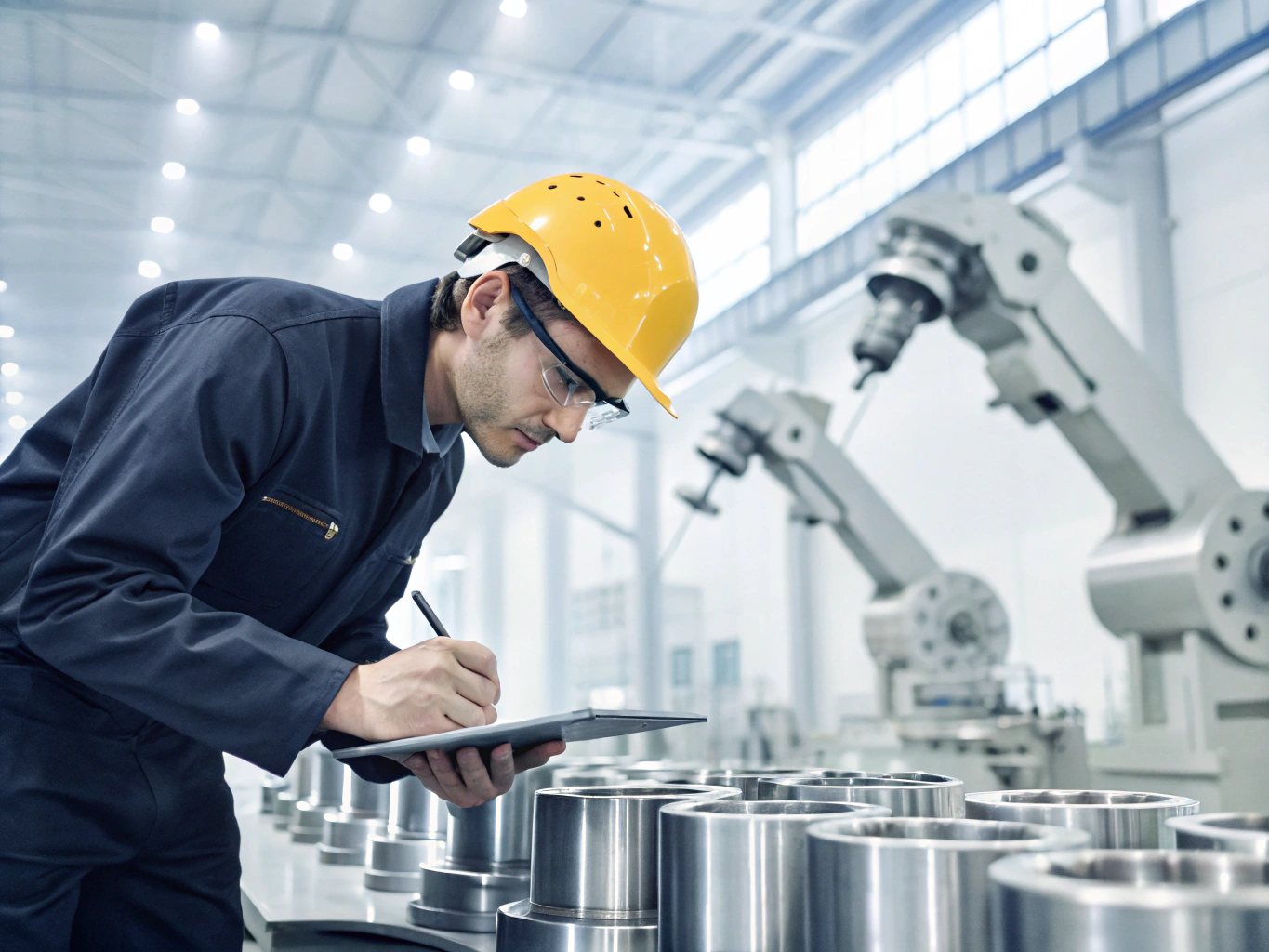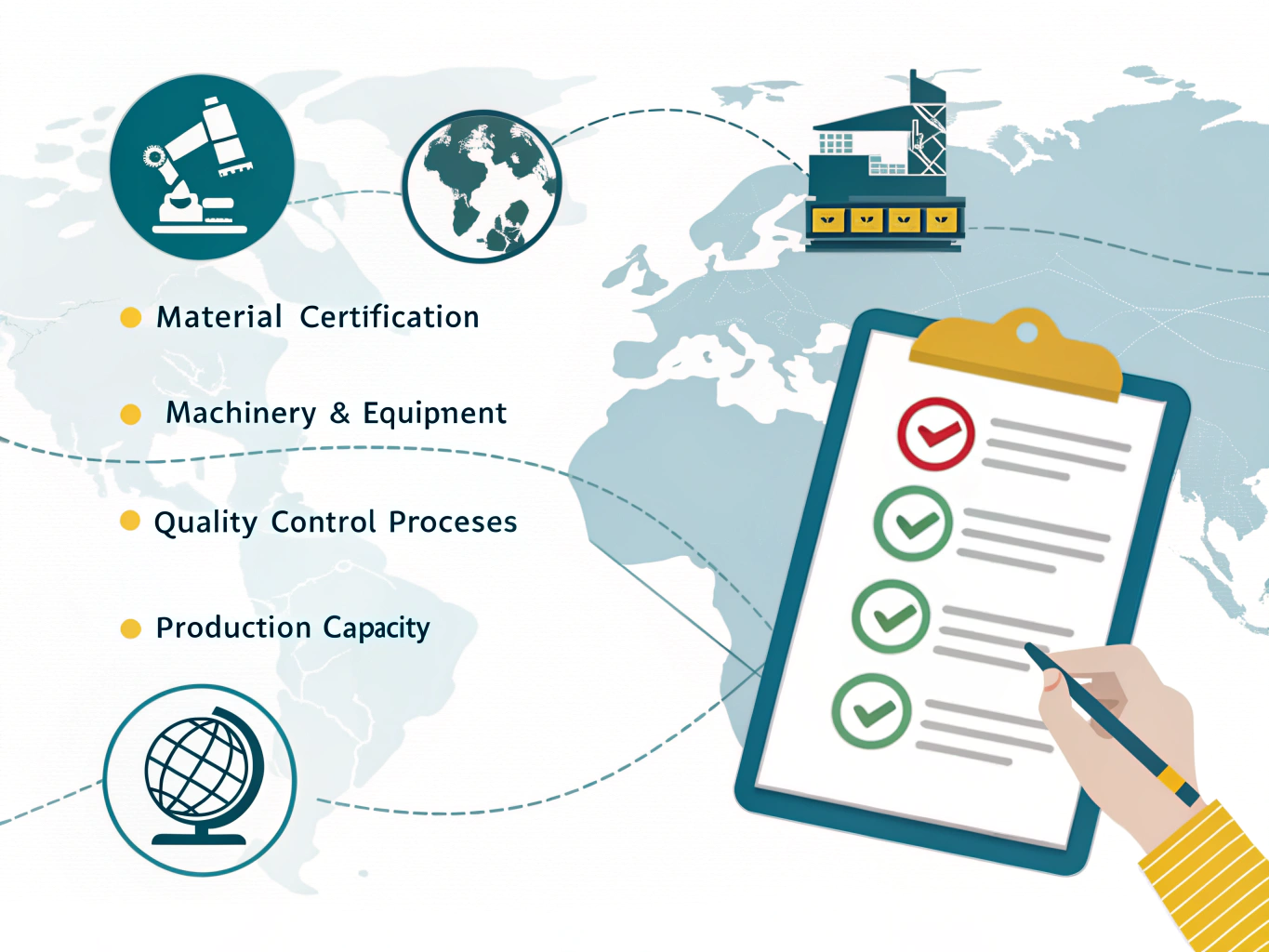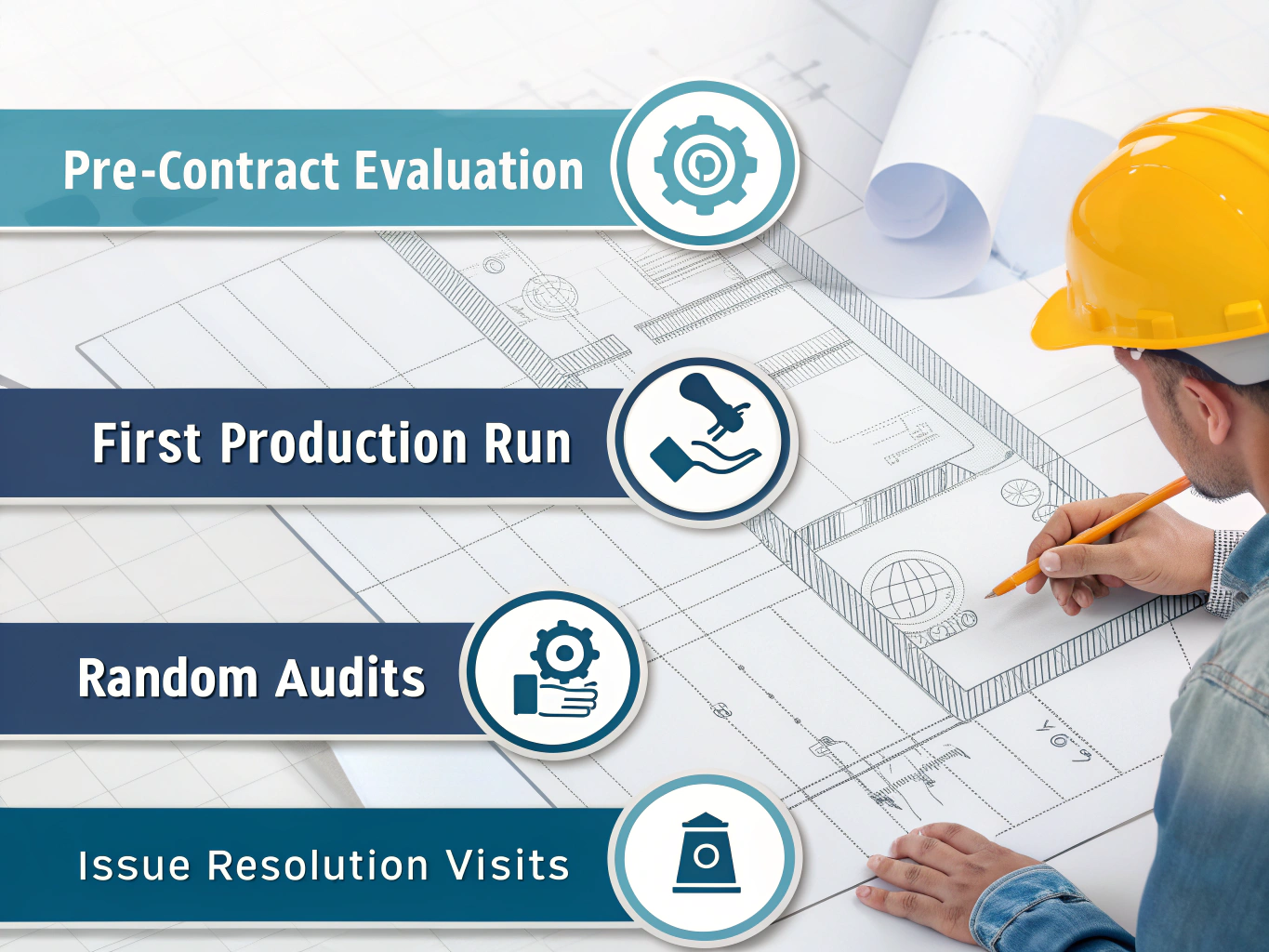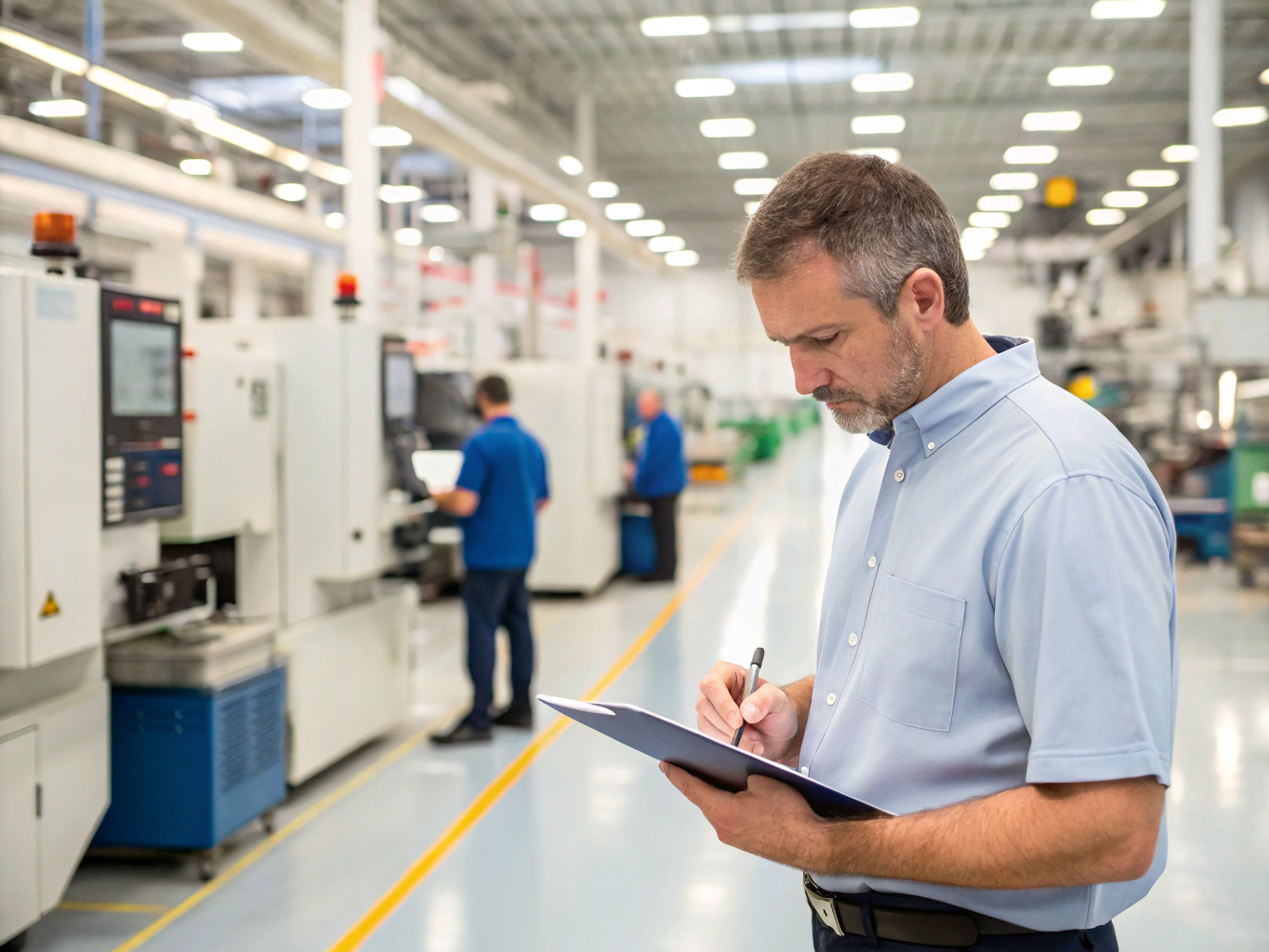
When sourcing custom steel parts, ensuring quality and production reliability is crucial. I have faced situations where remote communication alone led to unexpected delays and quality issues. This raises an important question—should you visit the factory in person for an on-site inspection?
An on-site inspection helps verify the factory’s production capabilities, ensuring they meet required specifications and quality standards. It allows direct evaluation of machinery, processes, and materials used in manufacturing. This physical inspection also helps detect potential issues such as material inconsistencies, machining defects, or process inefficiencies that might not be visible through remote assessments.
While personal visits offer significant advantages, they come with time and financial costs. The key is knowing when an inspection is necessary and whether alternatives like third-party audits can suffice.
What Potential Issues Can an On-Site Inspection Reveal?
Unexpected quality issues can turn a promising deal into a costly mistake. I’ve seen cases where sample parts met specifications, but bulk production suffered from deviations. This highlights the importance of on-site inspections.
A physical visit allows direct observation of raw materials, manufacturing processes, and quality control procedures. It helps identify defects early, preventing issues that could disrupt production.

Key Issues Identified During On-Site Inspections
- Material Inconsistencies – Factories may substitute lower-grade materials to cut costs.
- Machining Defects – Hidden flaws in precision cutting, welding, or finishing.
- Process Inefficiencies – Delays due to outdated machinery or poorly trained workers.
- Safety Violations – Factories failing to meet required labor and safety regulations1.
- Production Bottlenecks – Identifying capacity constraints affecting delivery timelines.
| Issue Type | Potential Impact | Solution |
|---|---|---|
| Material Substitution | Lower durability, failed stress tests | Verify material certificates, conduct lab tests |
| Machining Defects | Inconsistent tolerances, rework costs | Inspect sample production, review QC processes |
| Safety Violations | Compliance risks, worker injuries | Verify safety procedures, ensure legal adherence |
On-site visits allow buyers to catch these issues early, preventing expensive corrective measures later.
When Is the Best Time to Conduct a Factory Visit?
Timing is critical when planning an on-site inspection. A visit too early may not reveal production challenges, while a late inspection might be too late to correct issues.
The best time to visit a factory is before placing a large-volume order or finalizing long-term contracts. Early visits allow verification of supplier claims, while follow-up visits during production ensure quality consistency.

Recommended Stages for Factory Visits
- Pre-Contract Evaluation – Verify factory credentials, equipment, and capabilities2.
- First Production Run – Ensure quality and process compliance.
- Random Audits – Check consistency for repeat orders.
- Issue Resolution Visits – If quality issues arise, an on-site review helps resolve disputes.
| Visit Timing | Purpose | Benefits |
|---|---|---|
| Pre-Contract | Assess supplier reliability | Avoid unqualified manufacturers |
| During Production | Monitor process and quality | Prevent costly defects |
| Post-Production | Verify bulk order consistency | Ensure adherence to requirements |
Properly timed visits minimize risks and improve supplier relationships.
Can Third-Party Factory Audits Replace Personal Visits?
Traveling for factory visits can be expensive and time-consuming. Many businesses rely on third-party audits as an alternative. But do they provide the same level of assurance?
Third-party audits offer a structured way to assess a factory’s compliance and capabilities3. However, they may not fully replace personal visits, especially for complex projects requiring hands-on evaluation.

Comparing Third-Party Audits and Personal Visits
| Factor | Third-Party Audit | Personal Visit |
|---|---|---|
| Cost | Lower | Higher travel expenses |
| Depth of Inspection | Standardized checklists | Custom, hands-on review |
| Issue Detection | Limited by reports | Direct real-time insights |
| Relationship Building | Minimal interaction | Stronger supplier rapport |
For buyers dealing with high-precision parts or large orders, personal visits remain valuable. However, for standard parts, well-documented third-party audits can serve as a cost-effective alternative.
How to Balance the Cost and Benefits of an On-Site Inspection?
Not every order justifies a factory visit. The key is assessing when the benefits outweigh the costs.
A cost-benefit analysis helps determine if a visit is necessary. Consider factors such as order value, complexity, supplier reliability, and past performance before making a decision.

When Should You Visit?
- Large orders – A visit ensures smooth execution and reduces risk.
- New suppliers – Verifying their claims prevents unpleasant surprises4.
- Precision parts – Ensuring strict tolerances requires hands-on inspection.
When to Rely on Alternative Methods?
- Low-cost, low-risk orders – Virtual inspections may suffice.
- Repeat orders from trusted suppliers – Consistency reduces the need for visits.
- Travel restrictions or budget constraints – Local inspectors or third-party audits provide insights without travel5.
Conclusion
Factory visits provide critical insights into production quality and reliability. While third-party audits offer a cost-effective alternative, personal inspections remain valuable for high-precision or high-volume orders. Balancing cost and benefits ensures a smarter sourcing strategy.
Footnotes
Learn how safety compliance in manufacturing impacts productivity and reduces risks. # ↩
A guide to verifying supplier credentials and assessing factory capabilities. # ↩
Understanding third-party factory audits and their role in quality assurance. # ↩
The role of remote factory inspections in modern global sourcing. # ↩

